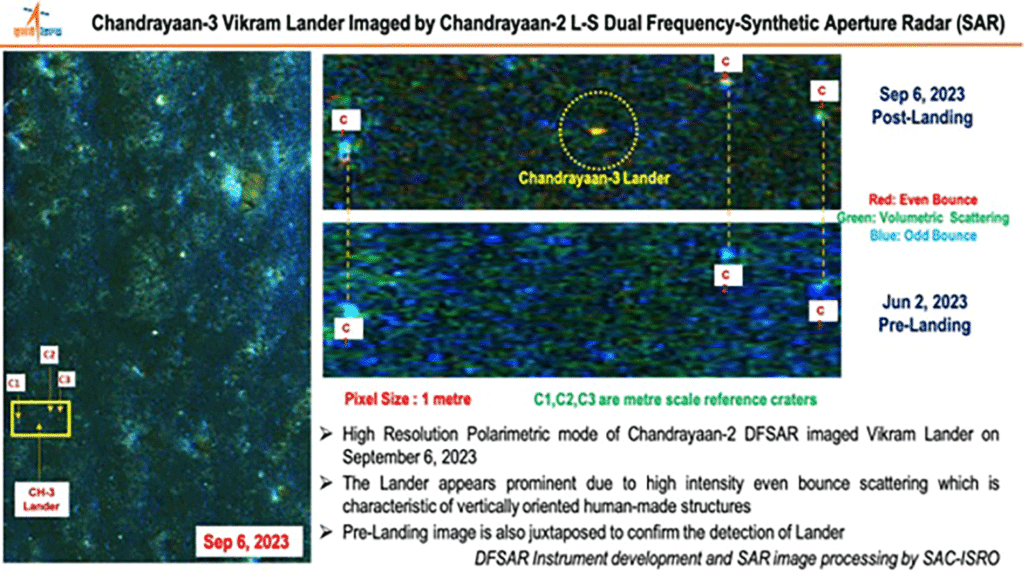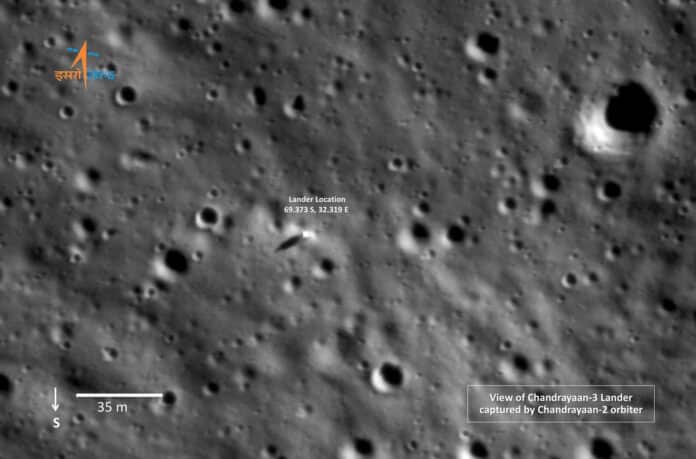On September 6, 2023, a Dual-frequency Synthetic Aperture Radar (DFSAR) instrument onboard the Chandrayaan-2 Orbiter captured the Chandrayaan-3 lander on the lunar surface.
A SAR instrument sends microwaves in a specific frequency band and then picks up those same waves as they are reflected off the surface. It can image even without solar illumination because it is a radar. It can offer both the target features’ physical details and their distance. SAR is, therefore, used to sense the Earth and other celestial bodies remotely.
A crucial scientific tool on the Chandrayaan-2 Orbiter is DFSAR. It makes use of L- and S-band microwaves. DFSAR can investigate lunar subsurface structures down to a few meters because of the extended radar wavelength. For the past four years, DFSAR has been beaming high-quality data by imaging the lunar surface, emphasizing lunar polar research.

Currently, the Vikram Lander and Prgyan rover of Chandrayaan-3 is in sleep mode and expected to awake around September 22, 2023.
Chandrayaan-2’s Vikram Lander failed to make a lunar soft landing in 2019. However, its orbiter continues orbiting the moon and carries out its functions. It also contains adequate fuel to remain in its orbit for almost eight years.
